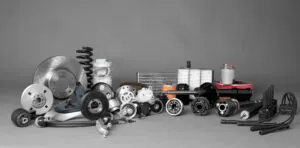Designer Toys Industry Overview
The designer toys industry has experienced remarkable growth in recent years, largely driven by the increasing popularity of board games and other collectible items. This surge in interest has significantly expanded the indoor games and puzzles category. Additionally, social media platforms have amplified toy purchases and game sales, as designer toys and games often inspire users—both adults and teens—to share their experiences online, with some content even going viral.
To navigate this dynamic market, businesses can leverage SpendEdge’s procurement market intelligence solutions. These services enable companies to systematically monitor supply market conditions and understand various inventory management techniques. This comprehensive approach helps businesses optimize their procurement strategies, ensuring they stay competitive in a rapidly evolving industry.
Effective inventory management techniques are pivotal to the success of any business, including the designer toy industry. In today’s business environment, having a thorough grasp of various inventory management techniques is essential for optimizing operational efficiency. The perpetual and periodic inventory management methods are the two major inventory management methods that offer distinct approaches to inventory tracking and control. These techniques help in reducing inventory holding costs and increasing potential profits.
The following are some of the most commonly deployed inventory management techniques and best practices:
- ABC analysis: This method involves categorizing inventory into three classes, namely, A, B, and C, based on their value and importance. Class A items are the most valuable, though they may be low in quantity. Class B items are of moderate value and quantity, while Class C items are the least valuable but high in quantity. This prioritization allows organizations to focus resources and management efforts on the most critical inventory
- Just-in-Time (JIT): This technique aims to improve cash flow and minimize inventory holding costs by receiving goods only when they are needed in the production process. JIT helps in eliminating deadstock situations and reducing waste, ensuring that inventory levels are always aligned with current demand
- Minimal stock level: This is the predetermined minimum amount of safety stock that a business maintains to mitigate the risk of stockouts. It ensures that there is always a buffer of inventory available to meet unexpected demand or supply chain disruptions, providing a safeguard against potential operational interruptions
- Cross-docking: In this practice, inbound goods are directly transferred from incoming trucks to outgoing trucks with minimal or no storage in between. This method optimizes logistics by reducing handling and storage time, leading to lower warehouse costs and faster delivery times
By implementing these inventory management techniques, businesses can achieve greater efficiency, reduce costs, and enhance profitability. Each method addresses different aspects of inventory control, enabling organizations to tailor their approach based on specific operational needs and market conditions.
Key Challenges in Toy Industry Supply Chain Management
Following are the key inventory management challenges faced by the toy industry:
- Seasonal demand fluctuations: The toy industry experiences significant seasonal demand swings due to holidays, school breaks, and special events. These fluctuations can lead to extreme changes in demand, resulting in either overstocking or understocking.
- Mitigation plan: Retailers must accurately forecast and plan for these demand variations to prevent stockouts during peak periods and excess toy inventory levels in subsequent periods. Effective demand planning is crucial to balance toy inventory levels and ensure product availability when needed
- New product introductions: Continuous innovation in the toy industry drives the frequent release of new products. Companies must manage the influx of new items while maintaining appropriate toy inventory levels of existing products. Balancing this dynamic is critical; failure to do so can result in shortages of popular new toys and surpluses of older toy inventory.
- Mitigation plan: Strategic inventory management practices are necessary to ensure that new products are adequately stocked without compromising the availability of established items
Solutions for Inventory Management Challenges
Advanced demand forecasting:
Using sophisticated models that incorporate historical sales, market trends, and external factors to predict demand accurately, reducing stockouts and overstock
Flexible inventory systems:
Adopting inventory systems that allow for rapid adjustments based on real-time sales data and market conditions can enhance responsiveness to demand fluctuations
Strategic inventory categorization:
Implementing inventory categorization methods, such as ABC analysis, helps prioritize inventory management efforts based on the value and turnover rate of products
Collaboration with suppliers:
Strengthening relationships with suppliers can improve lead times and flexibility in inventory replenishment, enabling better response to sudden demand changes
Inventory optimization technologies:
Leveraging technologies such as advanced analytics, AI-driven forecasting tools, automated replenishment systems, and customized toy store software can optimize inventory levels
Client Profile
The client is an American multinational designer toys manufacturing company, employing over 20,000 individuals.
Predicaments
The primary objective of the designer toys manufacturer was to reduce raw material and packaging material inventories at their manufacturing facilities, as well as finished goods inventories at their distribution centers. Additionally, the client sought to enhance efficiency and achieve cost savings across their supply chain.
Solutions Delivered
By leveraging SpendEdge’s inventory management techniques, the designer toys manufacturer was able to more effectively manage raw material and packaging material accounts at the factory level.
Recommendations to the Client
- Implement advanced inventory management techniques: Utilize SpendEdge’s inventory management strategies to improve planning and decision-making
- Categorize inventory items: Prioritize high-inventory raw material and packaging items to identify and address key factors contributing to elevated inventory levels
- Leverage technology: Use advanced analytics, AI-driven forecasting tools, and automated replenishment systems to optimize inventory levels
Areas of Inventory Covered
- Raw material inventories at manufacturing facilities
- Packaging material inventories at manufacturing facilities
- Finished goods inventories at distribution centers
Client Benefits
- Cost savings: Reduction in raw material, packaging material, and finished goods inventories led to significant cost savings
- Inventory control: Improved inventory management processes and enhanced control over inventory levels
- Supply chain streamlining: Optimization of the supply chain services resulted in more efficient operations
- Enhanced forecasting: Better planning and decision-making processes led to more accurate demand forecasting





